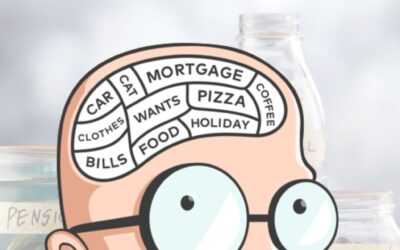The 180 Pulse
With thought-provoking articles covering varied domains, 180DC SRCC aims to create student leaders through a holistic learning experience.
Read to take a deep dive into looking at world issues from the eyes of a consultant.
BUSINESS AND FINANCE
The Real Estate Market Crash In China
This article by Sanit Jain discusses the Chinese real estate market crash, its causes, and its effects on the economy. The author argues that the crash was caused by a combination of factors, including over-ambitious players, prodigal use of funds, unsustainable financial practices, and a lack of foresight. The crash has had a significant impact on the Chinese economy, leading to unemployment, a fall in household income, and a cash crunch in the financial sector. The Chinese government is taking steps to protect the industry and prevent a financial crisis, but the author argues that the crash has highlighted the need for a more diversified economy and a more developed financial system.
Read more to find out!
Moonlighting – Cheating or Upskilling?
Unveiling the modern work paradox: Navigating moonlighting’s dual employment complexities in an ever-evolving professional landscape. A profound analysis by Arshiya Gupta, peeling back the layers of the multifarious practice where professionals seamlessly blend full-time roles with side pursuits, stimulating profound debates, and raising pertinent questions about viability, work-life equilibrium, and the shape of the future workforce.
Uncoupling Brokers from your Money
In her insightful article, Prisha Khandelwal explores a transformative trend in wealth management, highlighting how cutting-edge technology is reshaping the relationship between investors and brokers. The article, titled “Uncoupling Brokers from Your Money,” provides an in-depth analysis of the conventional investment process, shedding light on the potential risks arising from brokers’ misuse of investors’ funds and shares.
The article underscores that regulatory efforts, spearheaded by SEBI, aim not to harm the brokerage community but rather to foster a safer and more secure investment landscape for all stakeholders.
Experience this eye-opening read and discover how this paradigm shift is paving the way for a more transparent and investor-centric approach in wealth management. Check out “Uncoupling Brokers from your money” by Prisha Khandelwal through the link in bio. Don’t miss this opportunity to stay informed and empowered in the ever-evolving world of finance.
SCIENCE AND TECHNOLOGY
5G: A DIGITAL REVOLUTION?
The fifth-generation broadband technology would not just transform the lives of millions but also boost India’s economic growth. Given the rather stop-start journey of 5G in India which is now gathering pace fervently, this breakthrough in the form of mobile connectivity 5G technology will enable a more uniform user experience and the emergence of new services, applications and experiences, thus connecting the world at a breakneck pace.
How has been India’s tryst with 5G so far? Are we ready for 5G technology and 5G network in India? What does it has in store for the future of India?
Head on to the latest article in 180Pulse – “5G- A Digital Revolution?”, where Mehak Goyal delves deeper into the 5G technology in India and provides the answers to all the questions mentioned above.
Virtual Fashion: To wear, or not to wear
In a society recently ravaged by a pandemic, networking over the internet appears to be a routine chore. One may converse from the comfort of their own home using innovative programs such as the Metaverse. Digital clothing is something that enhances these encounters. Clothes no longer exist physically in this fashion-meets-digital scenario, instead, they are chosen from a virtual depiction created using 3D software and AR-based computer technology. But what is the future of this technology? Will its popularity fizz out?
Read out as Tanvi Vaidhyanathan delves deeper into the nuances of virtual fashion and provides with an interesting insight of this industry.
The Rising role of AI and its Future Impact on the Consulting Industry
Since the pandemic took over our lives, the word at the top of our minds has been ‘uncertainy’. Jobs are being replaced and taken over by machines on a daily basis as a result of the rise of a technological world. AI has the potential to do the same for the next generation, and it has become a source of concern for both young and old professionals.
What will the future of consulting be in this situation? Can consultants be ‘replaced’? Read as Harishraj Srinivasan tries to figure out the road ahead for the consulting industry in the AI-driven world.
ECONOMIC AND PUBLIC POLICY
Public Transportation: The Perfect Answer for 21st Century Problems
What if we had the permanent solution to problems like global warming, traffic jams, pollution, rising fuel prices? Perhaps, we already have the solution and haven’t given enough thought and attention to it.
Embark on a captivating journey through Manan Gulati’s thought-provoking article, “Public Transportation: The Perfect Answer to 21st Century problems?” Explore the economic, environmental, and societal benefits of embracing robust public transport systems. Learn how redefining the way we commute and paving the way for a sustainable, healthier future is not all that difficult.
Understanding India’s Aromatic Future with the Purple Revolution
Were you aware that the cultivation of lavender has been instrumental in helping farmers in Jammu & Kashmir endure the COVID-19 pandemic? This emerging trend of lavender farming in India has been coined as the Purple Revolution.
The primary objective of the revolution is to maximize the natural resources of Jammu and Kashmir and enhance the cultivation of lavender. By providing education and training in lavender cultivation, this initiative has effectively transformed the lives of numerous farmers in Jammu and Kashmir.
To gain insight into the Purple Revolution and the aromatic future of India, check out our recent article, which delves deep into Understanding India’s Aromatic Future With The Purple Revolution.
The Declining Dollar Reign
The dollar’s long reign of dominance as the world’s primary medium of exchange is beginning to wane as nations around the world adopt strategies of de-dollarization in order to prevent Western countries from exploiting their economic power for personal gain.
But what is de-dollarisation and how India is moving towards becoming a developed nation through internationalisation of the rupee?
Are there any risks involved in internationalising the rupee? If so, what are the measures that need to be taken in order to ensure that these risks are minimised?
Check out Pooja Jain’s article on “The Declining Dollar Reign” that delves deeper into these questions and tries to answer how India is taking steps to reduce its reliance on the dollar and become a more prominent player in global trade.
PSYCHOLOGY & HISTORY
A Good Deal: The Theatrics of Mental Accounting
Imagine you’re walking down the street, and you happen to find a ₹2000 note lying on the sidewalk. You’ve been trying to save some money to put towards buying a new car in the future. Today, however, you take your newfound ₹2000 and put it towards an expensive dinner. You tell yourself that this money isn’t “car money” — this is a one-off, special occasion, so why not treat yourself to a nice evening out?
Why do we treat some money differently? Why do we think less about some purchases than others? Consumers, although deemed to be rational, are economic elements that more often than not are ruled by cognitive errors.
Because of mental accounting, we often behave illogically when it comes to money. Read on as Suhani Jain breaks down how marketers use this loophole to their advantage, convincing customers into the Theatrics of a ‘Good Deal’.
Generation Gaps in Workspace: Threat or an Opportunity?
In spite of attempts made to bridge today’s generation gaps between people of different age groups, few instances of “Generation wars” do pop up in some form or the other. Apart from social and cultural interactions, the workplace is where people belonging to almost all generations find themselves interacting on an everyday basis.
But is having a diverse set of workforce always necessarily a threat to organizational efficiency? When we frequently point out issues such as communication barriers, differences in working style and contrasting beliefs, why do we often overlook the benefits of intergenerational interactions?
Head to the latest article on 180 Pulse – “Generation Gaps in Workspace: Threat or an Opportunity?”, where Subhashini K analyses how generation barriers can be turned into effective tools to propel organizational growth.
Bounded Rationality in Decision Making
When we think of all the decisions that we have to make daily, trying to make the optimal decision is often not possible. Our cognitive thinking abilities and self control across diverse activities are ‘bounded’ because of various limitations. The implications of these limitations range from having misconceptions about certain people in our lives to speculative bubbles in various asset classes.
What deviates our decisions from what is considered to be desirable or logical? How do we make the right decision and outsmart our cognitive biases?
Check out Ananya Taneja’s article on ‘Bounded Rationality in Decision Making’ that delves into these questions through the realm of Behavioural Economics.












